Abstract
The intracellular binding of dinitroaniline herbicides was studied in order to analyze the mechanism of their colchicine-like action. When corn root apices (5 millimeters) are incubated in [14C]oryzalin (a dinitroaniline herbicide), the 14C is taken up rapidly, reaching a plateau in about 4 hours, which corresponds to the minimum incubation time in oryzalin required to get maximum inhibition of elongation. At 4 hours, the [14C]oryzalin concentration inside the roots is 35 times higher than that in the incubation medium. Since this accumulation of [14C]oryzalin is not affected by 1 millimolar sodium azide and there is no metabolism of [14C]oryzalin under these conditions, the [14C]oryzalin must be accumulated (bound) in corn root apices by a process not requiring metabolic energy.
Molecular sieve chromatography (Sephadex G-200) does not show any binding of [14C]oryzalin to any protein with molecular weight similar to the microtubule-subunit protein in rat brain or corn root extracts. However, a massive binding of [14C]oryzalin occurs in the insoluble fraction of corn root extracts. This binding is not localized in any particle size range, is not affected by sonication, is of high capacity, and is a loose (low affinity) association with the binding sites. These binding sites could be solubilized with membrane detergents, which suggests that oryzalin may bind to cellular membranes. Since boiling the homogenate does not affect [14C]oryzalin binding, oryzalin more likely binds to a lipid rather than a protein component of cellular membranes.
Full text
PDF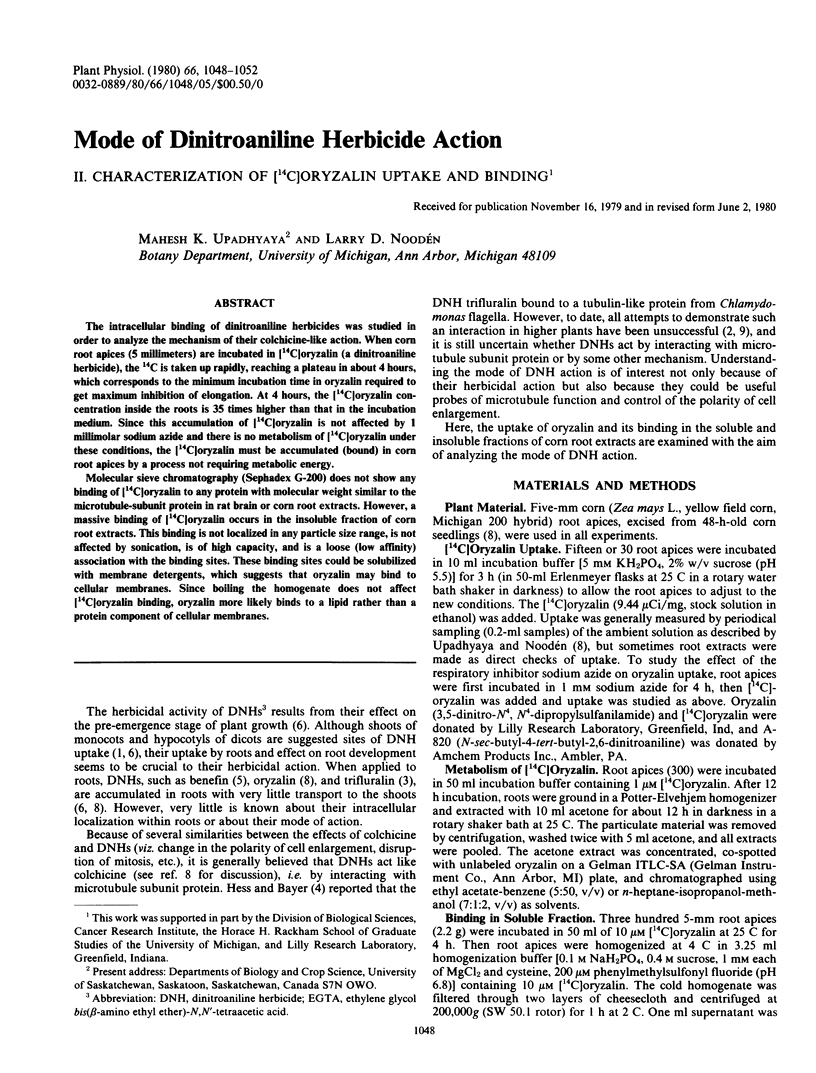
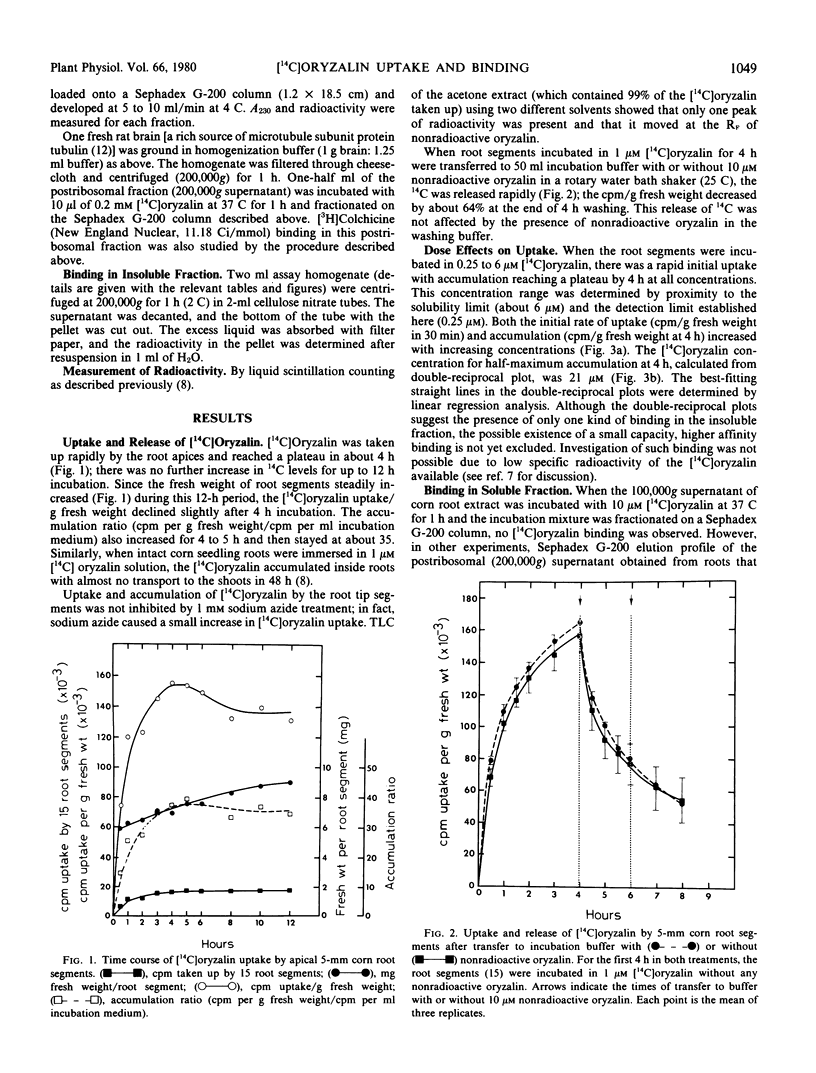
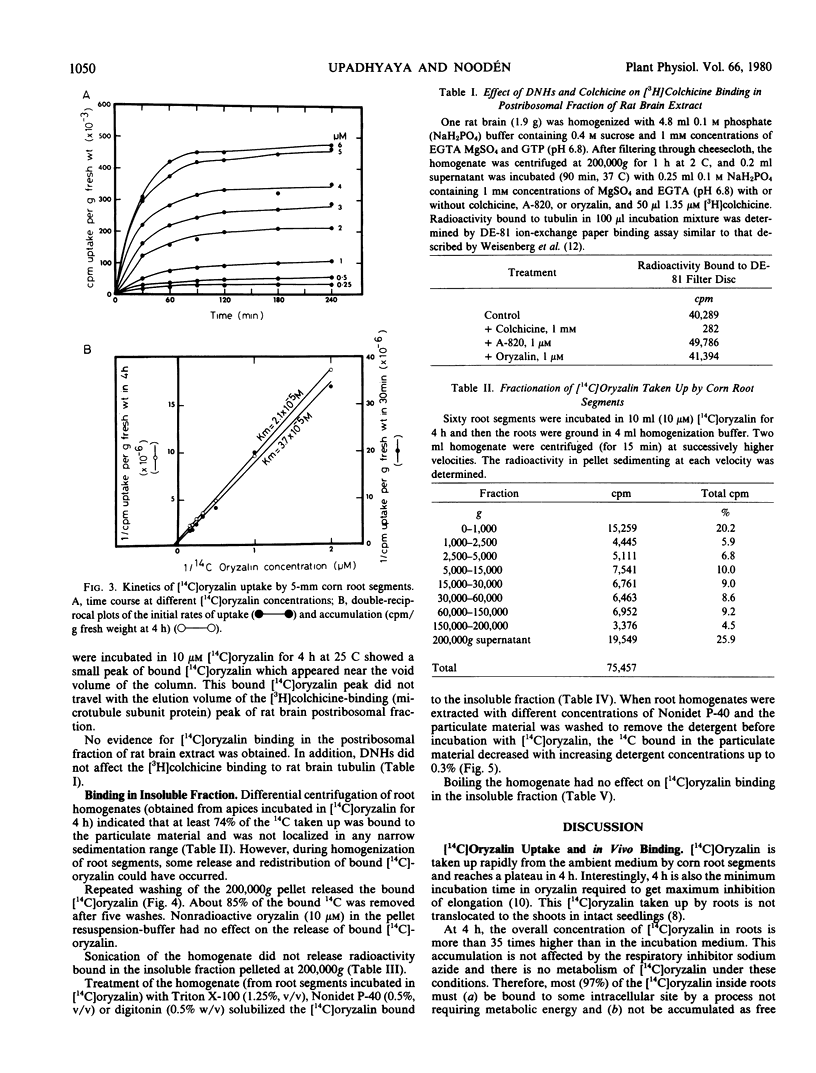
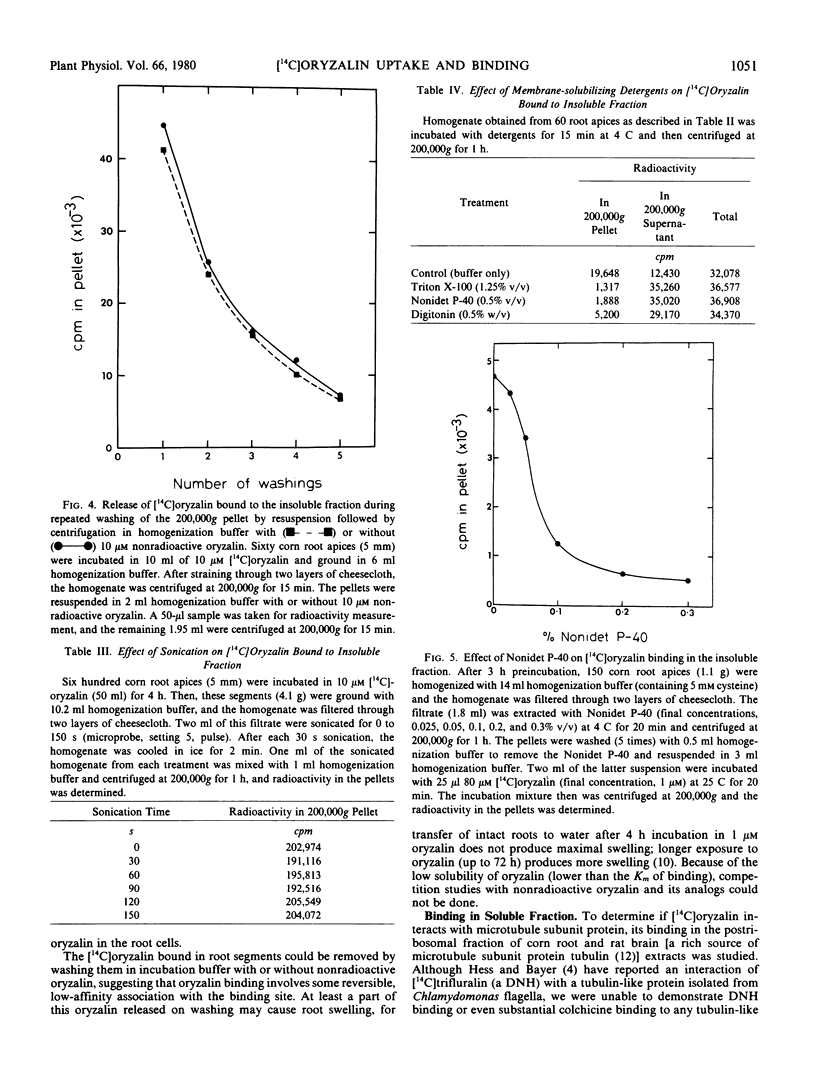
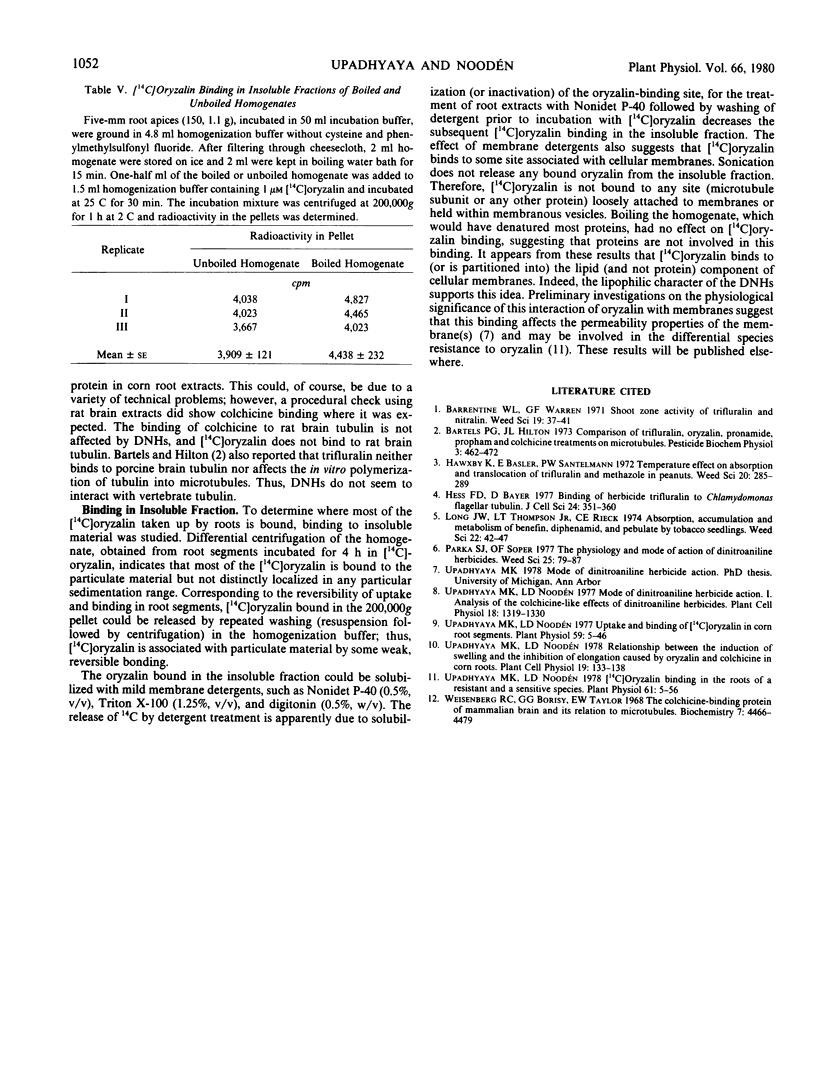
Selected References
These references are in PubMed. This may not be the complete list of references from this article.
- Hess F. D., Bayer D. E. Binding of the herbicide trifluralin to Chlamydomonas flagellar tubulin. J Cell Sci. 1977 Apr;24:351–360. doi: 10.1242/jcs.24.1.351. [DOI] [PubMed] [Google Scholar]
- Weisenberg R. C., Borisy G. G., Taylor E. W. The colchicine-binding protein of mammalian brain and its relation to microtubules. Biochemistry. 1968 Dec;7(12):4466–4479. doi: 10.1021/bi00852a043. [DOI] [PubMed] [Google Scholar]


